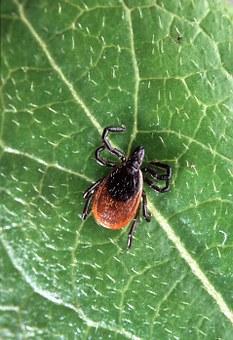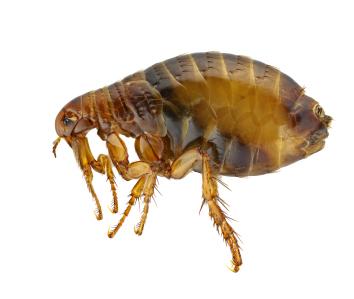If you are a pet owner, you will already know that treating your dog for fleas and ticks is a year-round issue. However, there are certain times of the year when the flea and tick population increases and that can mean far more cases of tick-borne diseases in people and animals.
How do we know if there will be lots of ticks this year?
There have been many reports throughout the media already this year to indicate that this is likely to be one of the most problematic years for fleas and ticks in the US. Scientists know which years will be worse for Lyme disease than others simply by recording the number of mice throughout the country. Mice transmit Lyme disease very efficiently and ticks thrive on mice, with approximately 50 to 100 ticks covering a mouse’s face.1 In 2016 there was a plague of mice in the US and because of this, scientists know that 2017 will see higher numbers of ticks than in other years.
When temperatures during the winter are mild and spring arrives early, fleas and ticks thrive.

Why do you need to protect your dog from fleas and ticks?
Dog fleas survive by biting the host (the dog), which initially causes itching and redness on the dog’s skin. Some dogs can become severely anemic because of the blood loss caused by a flea infestation. Others develop a hypersensitivity to the saliva from fleas, which may make dogs scratch more intensely and may lead to hair loss and abrasions, which ultimately can lead to infections.
Fleas are also intermediate hosts for tapeworms, so there is a likelihood of dogs ingesting tapeworms too. Fleas also carry other diseases such as the plague, typhus, and myxomatosis.

Ticks also spread disease. If your dog gets bitten by a tick it can cause a wide range of health issues. The most commonly known is Lyme disease, which causes swelling at the joints and can result in lameness. Rocky mountain spotted fever is another illness, which causes fever and lameness plus other symptoms. Babesiosis can also occur. Ticks can also cause your pet to become anemic and certain species of female ticks can cause paralysis in dogs.
How do you protect your dog?
Use a flea and tick control product on your pet and ensure that you apply the treatment as directed by the manufacturer. Consistency is important, as skipping a treatment can mean months trying to get back on top of the problem.
In your yard, prevent ticks from thriving by keeping lawns mowed, ensuring that there aren’t big piles of leaves and keeping trees and hedging trimmed. Try to keep fleas at a minimum by deterring wildlife from entering your yard, as they bring plenty of fleas with them.
Protecting your dog from ticks is not particularly easy. Ticks can attach themselves to your pet when you are out walking your dog without you realizing. Try to keep your pet away from areas where there is a particularly high tick infestation – your veterinarian may be aware of locations in your area that are best avoided.

What to do if your dog gets bitten by a tick
Ticks often become attached around the head, ears, neck, and feet of your pet, but they can show up in other areas too. Always check your dog thoroughly following a walk. If you find a tick on your dog, don’t just pull the tick off as it can leave parts of the tick behind, which will cause further problems.
There are products that you can buy at pet stores or veterinarian offices that allow you to lift the tick safely off your dog’s skin.
Alternatively, you can remove a tick simply using tweezers. The Humane Society recommends the following approach. Using clean tweezers, grasp the tick as close to the dog’s skin as possible and pull it out of the skin in one straight, steady motion.2 Always wear gloves to ensure that you don’t get bitten by the tick too.
If you have questions or concerns about the best way to keep ticks and fleas at bay or how to treat your pet for problems associated with these bugs, speak to your local veterinarian. Your veterinarian can advise you based on your location, the breed and size of your dog, and based on any other health conditions that your dog may have.
References
- http://www.npr.org/sections/goatsandsoda/2017/03/06/518219485/forbidding-forecast-for-lyme-disease-in-the-northeast?utm_source=twitter.com&utm_medium=social&utm_campaign=npr&utm_term=nprnews&utm_content=20170306
- http://www.humanesociety.org/animals/dogs/tips/getting_ticks_off_dog.html?referrer=https://www.google.co.uk/
Tagged: abrasions, anemia, babesiosis, Fleas, hair loss, Health, Hypersensitivity, infection, infestation, itching, Lyme disease, Mice, Mouse plague, myxomatosis, NPR, paralysis, plague, prevention, rocky mountain spotted fever, scratching, tapeworm, The Humane Society, tick removal, Ticks, Tweezers, typhus, veterinarian's office


